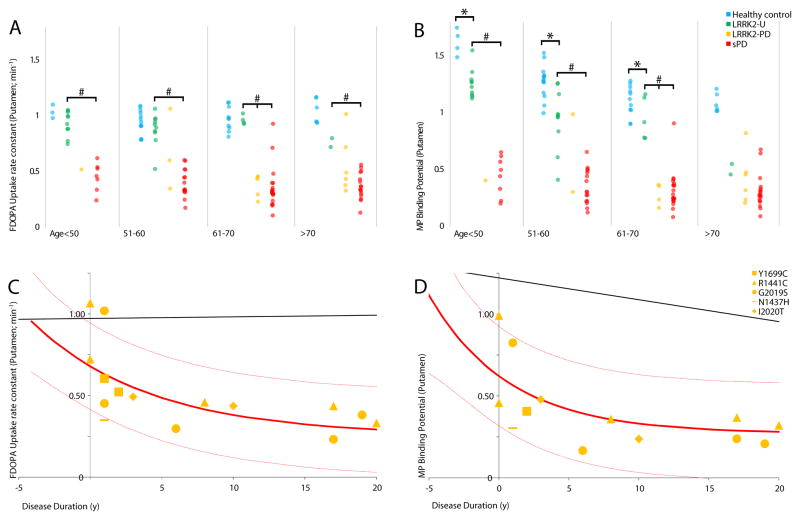Figure 1.
FDOPA uptake, MP binding grouped by age
18F-FDOPA (F-DOPA) uptake (left panels) and 11C-d-threo-methylphenidate (MP) binding (right panels) in the putamen of healthy controls, LRRK2 mutation carriers with or without manifest PD, and sporadic PD.
A, B: Group comparisons of putamen FDOPA uptake and MP binding.
*LRRK2-unaffected significantly less than healthy controls; p<0·0001. # LRRK2-unaffected significantly greater than LRRK2-PD/sPD; p<0·0001. LRRK2-PD and sPD groups are significantly different from healthy controls for all ages and regions.
C, D: Putamen FDOPA uptake and MP binding as a function of disease duration in symptomatic LRRK2 mutation carriers. Each point represents a single patient; point shape indicates the specific LRRK2 mutation carried by the patient. Solid red line is the equivalent function in patients with sporadic Parkinson’s disease, with 95% confidence limits displayed as light red lines. The solid black line shows the effect of age in healthy controls starting at age 57 (equivalent to duration = 0).

